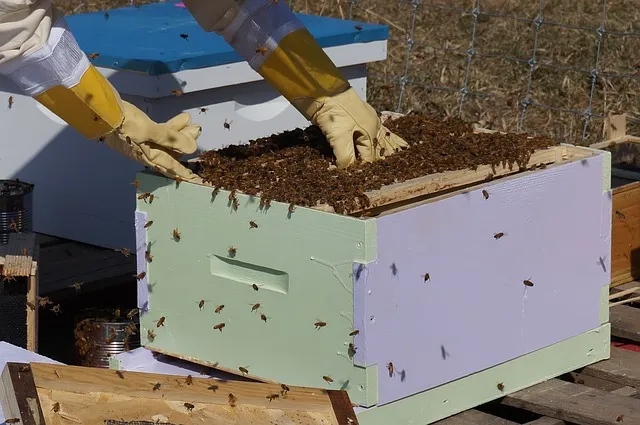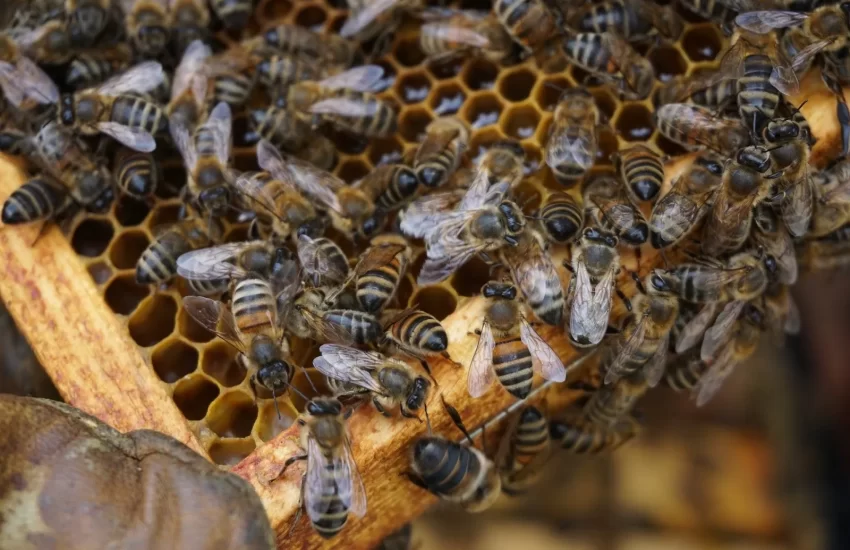How many bees are needed for a split?
Splitting a hive entails taking a portion of a strong, vibrant colony and transferring it into a new hive. By doing so, you create two colonies from one. Both splits should have a high chance of building resources and establishing quickly. They should have abundant foraging resources and ample time to build up. Each split should have enough workers, abundant food stores, brood, and a queen to thrive. It is not advisable to split first-year colonies. It should be done on overwintered colonies.
Similar Articles you may like to read –
How many bees are in a 10-frame box?
How long can bees stay in a swarm box?
Is beekeeping expensive to start? / cost to start beekeeping
How many bee colonies should I start with?
How many bees are needed for a split?
A split requires a good number of bees to survive. Ideally, 3 or 4 frames of bees shaken into the new hive are enough. You should also divide the number of brood frames equally. Ensure to put more capped broods in the new hive since bees in the new split are always fewer. These will soon hatch and become nurse bees. This helps to increase the hive population rapidly. You should monitor the splits closely after creation and feed the colonies if necessary.
Why do beekeepers split their colonies?
To Prevent Swarming
A healthy hive that has outgrown its space is a candidate for swarming. Once beekeepers realize a colony is preparing to swarm, they divide it to create ample space for hive residents. Every beekeeper should learn this essential skill to avoid the loss of colonies through swarming.
Create a New Colony
Every beekeeper wants another colony! Other than buying another package or nuc, dividing an existing colony works best and is cost-effective. It is also a great way to replace colonies lost in winter.
Raise a Queen
A split will help you to obtain a queen at no cost. If the new hive has all it needs(food stores, workers, all developmental stages of bees), the workers will help you out. On realizing the hive is queenless, they will raise a new queen using the eggs or larvae available. Some beekeepers prefer to introduce a new queen in a cage, though. It takes several weeks for a split to raise a new queen. The colony population may drop until new bees are raised.
When is the best time to split a colony?
The best time to split a hive is mid to late spring before significant nectar flows. This is the season that bee colonies burst out in the population. Be sure to plan early before your colony builds up a large population and make preparations for swarming. You may also consider splitting a colony in summer if you have large, strong colonies. However, you must ensure that the colonies have enough time to build up for winter. Ensure the bee population is large and has at least ten brood frames. Bees tend to pour over on the top frames when you open an overcrowded hive.
More articles you may like to read –
How many acres do you need for beekeeping?
Where should I put my beehive in my yard?
Are honey bees high maintenance?
Is beekeeping expensive to start? / cost to start beekeeping
Minimum Size For Split
When considering splitting a hive, it’s important to ensure that both the parent hive and the new split have enough bees and resources to thrive independently. While there is no exact number of bees required for a split, a general rule of thumb is to have at least 10,000 to 20,000 bees in the parent hive before splitting. This ensures that both the parent and split hives have enough worker bees to forage, care for brood, and maintain the hive. Additionally, both hives should have an adequate supply of honey, pollen, and brood to sustain them until the new split can establish itself and begin producing resources independently.
Can you split a hive and put it in the same bee yard?
A beekeeper should locate the new split in another location since the worker bees you move you the new hive will fly back to their original home. This can cause the new hive to be depopulated. In the worst case, it can lack bees to sustain itself.
Ensure you move it three or more miles away so the forger bees can re-orientate themselves. By doing so, you will be able to retain the forager’s bees and increase the chances of survival in the new split. After a few weeks, you can return the new hive to your apiary. The bees will see it as a new location and re-adjust again. Splitting colonies requires practice. Not every split will be successful.




